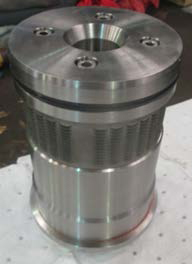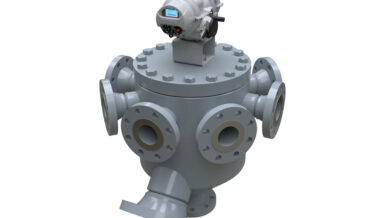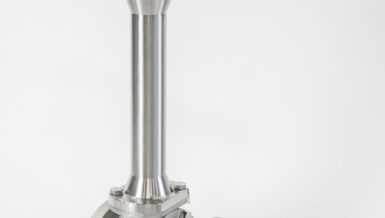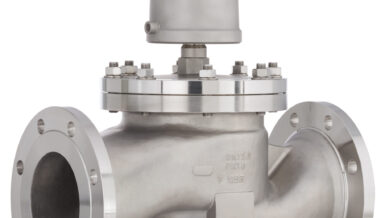The selection of the proper control valve for an application can be complex. By nature of the service they perform, control valves are often subject to high pressure drops, which could, if not properly controlled, cause damage to the valve through cavitation. Trillium’s engineers have developed the X-Stream™ trim to tackle this cavitation issue. The X-Stream™ is a multi-stage trim for severe service that reduces cavitation, erosion, and noise.
In processes where existing valves are in place, especially when welded in the line, operators often prefer to keep the valve body and replace the valve trim. By retrofitting a trim into an existing valve, the operator saves the cost of replacing the complete pressure envelope and reduces installation time.
In cases where the user wants to replace the incumbent valve trim due to performance
issues, the application must be thoroughly investigated to establish why the original valve is not performing as required. The first stage of this process is to check and confirm the process conditions. Invariably, process conditions are different from the conditions stated during the original specification process. During the investigation process, any other adverse conditions, such as valve location and fluid contamination, can also be considered.
Challenge
The end user of a power plant based in the Middle East contacted Trillium regarding their minimum flow control valves. The valves suffered from regular trim failures due to erosion caused by high pressure drops, disrupting operations and leading to a high spares turnover due to regular trim replacements.
For this project, the problematic valves were required to maintain Inlet pressure at 137 Bar A, outlet pressure between 4,6 and 2.1 Bar A, and vapor pressure at 4.574 Bar A.
After analysing the system in situ and the process conditions, the Trillium team identified the causes of the frequent trim failures:
- Erosion caused by inadequate control of the high-pressure drop during the pressure reduction process
- Cavitation: Based on the valve outlet pressure of 4.6 Bar A and the vapor pressure of 4.574 Bar A, the valves with a conventional trim were subject to high levels of cavitation. To eliminate cavitation, the valve trim needed to be specified with multiple stages of pressure reduction.
- Flashing: In some of the process cases, when the outlet pressure was 2.1 Bar A, and the vapor pressure was 4.574 Bar A, the fluid conditions meant that the valves were “Flashing”. This is a highly destructive process where a high-pressure drop causes a two-phase flow. Flashing is a function of the process conditions and cannot be eliminated. However, selecting the correct trim can eliminate or reduce the amount of flashing erosion in the valve.
Solution
The X-Stream™ was identified as an ideal solution because it is designed to gradually reduce the pressure over discrete pressure drop stages. This minimizes the erosive effects of the drop by dispersing the energy loss through the trim. In addition, the X-Stream™ trim is uniquely suited to applications where cavitation is an issue. By selecting the correct number of pressure drop stages, cavitation can be completely eliminated.
Our team of engineers worked closely with the customer. They obtained a trim from a problematic valve and carried out a 3D laser scan of the inside of the valve body. This allowed them to create a full 3-D model of the original valve and to produce a complete set of detail drawings for an X-Stream™ trim that would fit the valve body.
The cage section of the X-Stream™ trim was produced using state-of-the-art Selective Laser Melting (SLM) technology, which allows steel components to be printed directly from a 3D model.
Printing the X-Steam™ trim also allowed the introduction of high-tech aerofoils into the design, for a smoother transition of the flow from the inlet to the outlet of the trim. Furthermore, the trim was designed with a replaceable cartridge, where the X-Stream™ trim section could easily be unbolted and replaced as a unit rather than the customer having to replace the whole cage.
Once the full replacement trim was produced, the valves were completely stripped, the original trim removed and the replacement X-Stream™ trim fitted. The complete valves were re-built without any issues and fully pressure tested.
Results
Using valve system analysis and 3D modelling, Trillium’s engineers found that full valve replacement was unnecessary. Instead, they replaced the conventional trims with new multi-stage X-Stream™ trims, improving the performance and extending the life of the customers’ existing valves.










